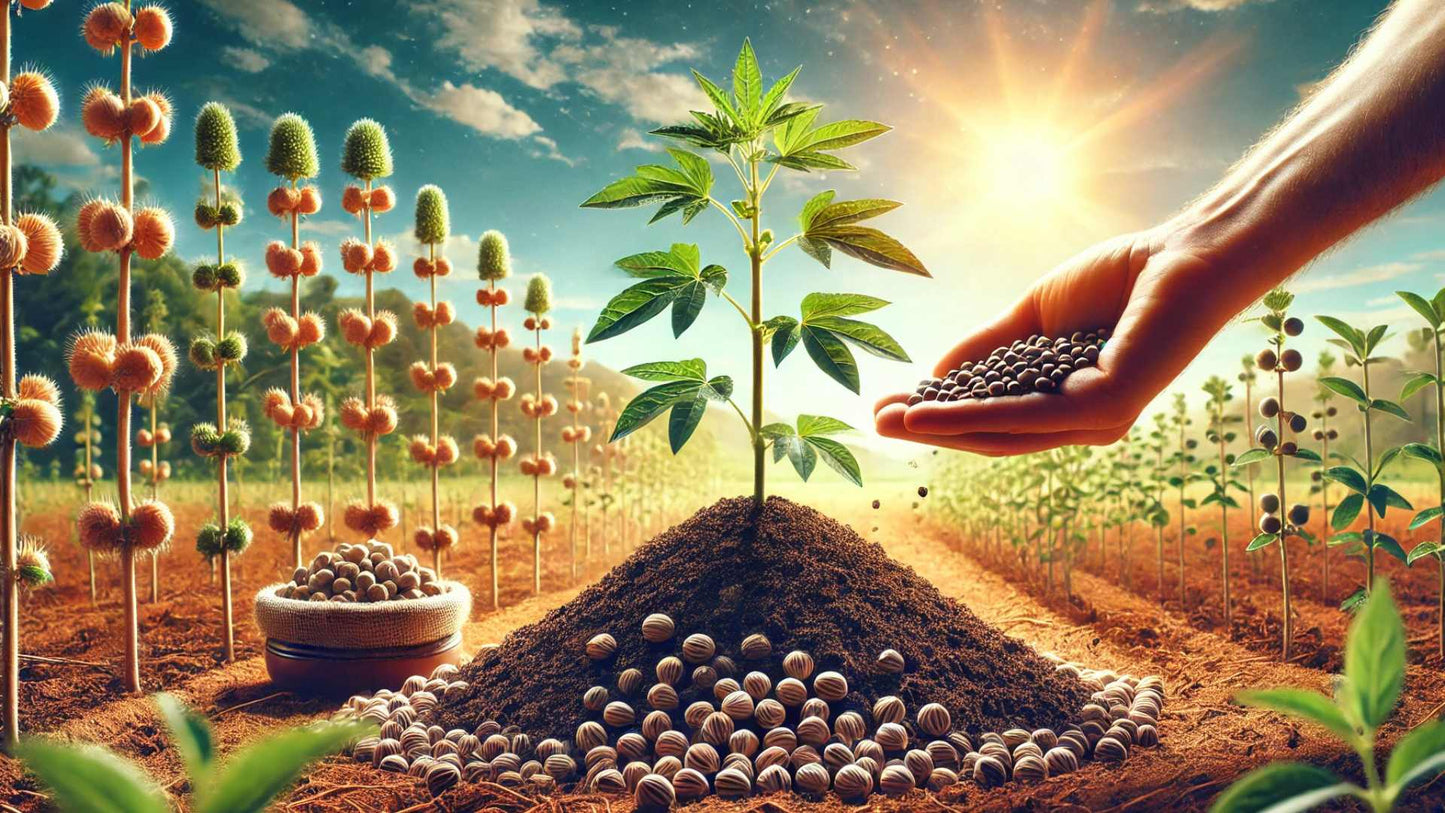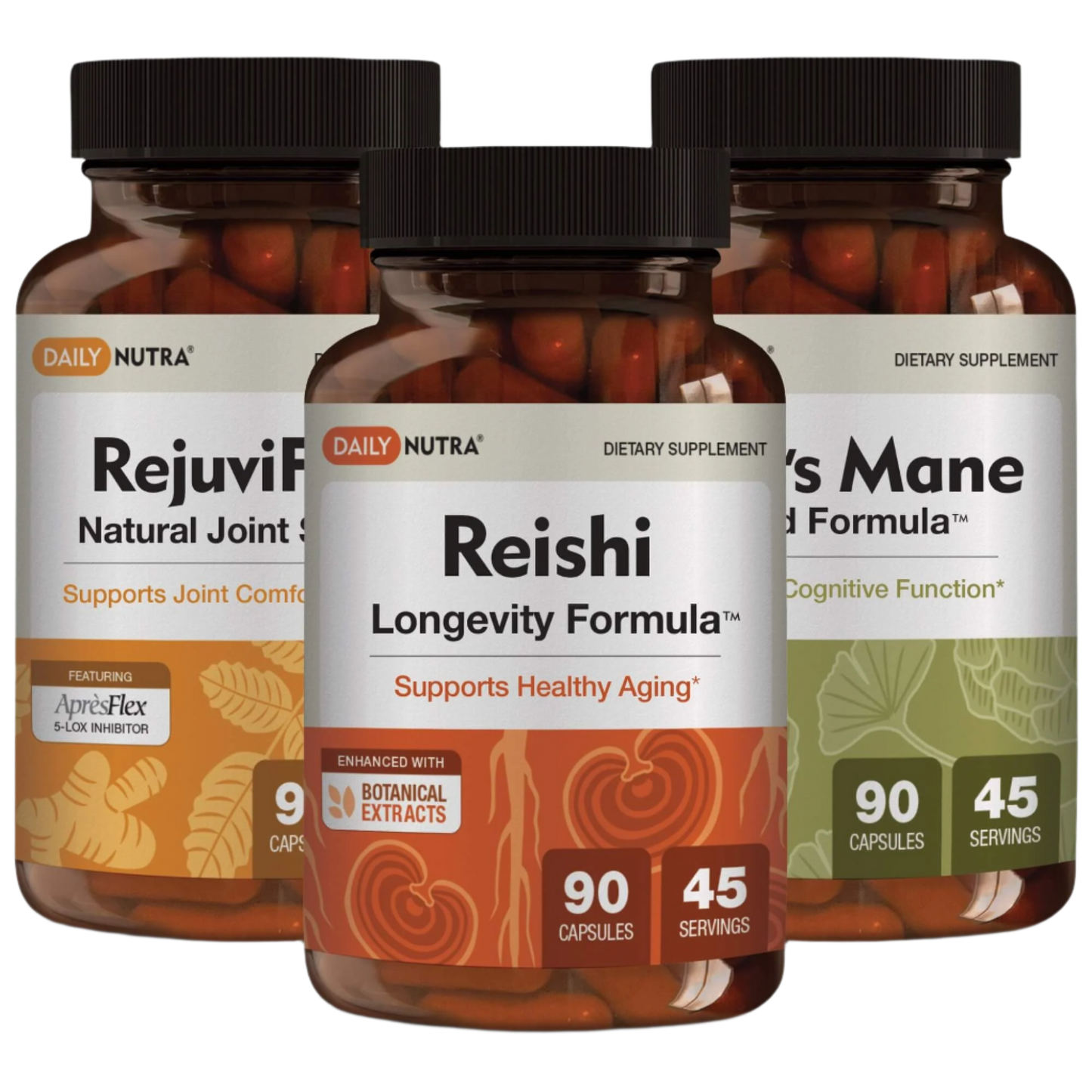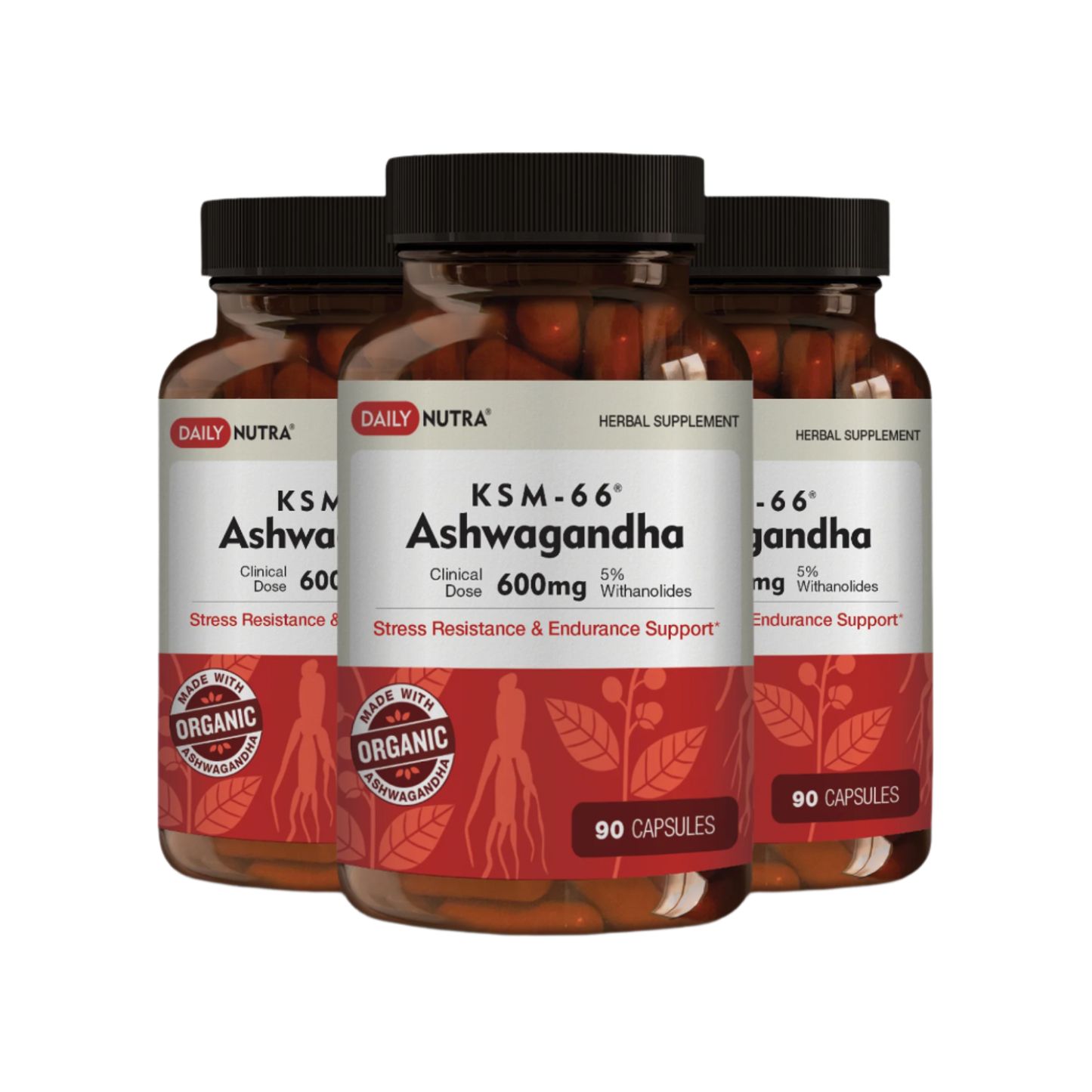
Recent research brings ashwagandha's health advantages to light across different populations worldwide.
Every day, people recognize the ashwagandha root, but few know how vital the plant's seeds are to its life cycle and future uses.
Our article investigates every detail of ashwagandha seed usage, along with benefits and cultivation methods.
What Are Ashwagandha Seeds?
The Withania somnifera plant from India and African areas makes ashwagandha seeds.
The ashwagandha plant requires these seeds to grow and produce both its deep roots and broad leaves, which become medicinal plants.
Ashwagandha seeds take the form of tiny, round, pale beige particles that look like they could be sand grains.
The ashwagandha life cycle depends heavily on these seeds because you need them to create your garden.
If you want to grow ashwagandha at home or commercially, choose seeds with strong germination potential first, and consider transplanting them for optimal growth.
Benefits of Ashwagandha Seeds
People often ignore ashwagandha seeds when using the plant's root, but these tiny seeds are vital for anyone who wants to raise this beneficial herb (1).
Ashwagandha seeds help people grow a sustainable herbal supply through propagation, which can be beneficial for reducing stress.
Growing ashwagandha seeds allows you to produce endless fresh supplies when you don't depend on outside vendors.
You can control your ashwagandha growth better when you plant your own seeds.
Growing your own ashwagandha enables you to become self-dependent when using herbal medicines.
Most of ashwagandha's positive impact on health comes from its root system, but planting your own plants at home makes adding it to your daily life simpler.
By planting aashwagandhaseeds, you enable people to use organic farm methods and help reduce big commercial farming operations.
See these natural supplements made from wild and nutrient-packed plants to improve your wellness practices.
Essential Nutrients in Ashwagandha Seeds
Although people rarely consume ashwagandha seeds, those parts serve as essential building blocks for the entire shrub and its important adaptogenic benefits.
As evidence shows, ashwagandha contains withanolides, which naturally possess a steroid chemistry to relieve inflammation and fight stress.
Most ashwagandha plant benefits reside in its root, yet the plant requires seeds to grow and reach its health benefits matrix.
People use Ashwagandha seeds both historically and today as part of the plant production process.
For over 2000 years, Ayurvedic medicine has harnessed Ashwagandha to improve vitality and alleviate stress while boosting overall health (2).
Despite their minor herbal role, the seeds remain essential for growing this plant.
Many wellness practitioners now use ashwagandha seeds to help people ease their stress and strengthen their immune system (3).
When you start ashwagandha, do you gain access to both ancient and current plant benefits?

Uses of Ashwagandha Seeds
Before you plant Ashwagandha seeds, you need to grow your own plant.
You begin by planting seeds to create your ashwagandha plant while maintaining organic standards of quality.
People seeking wellness through ashwagandha can gain a deep understanding of the plant's benefits and better control the final result by growing it themselves.
People who want to plant their own ashwagandha supply for home or business purposes can purchase the seeds from the market, including those of winter cherry.
Even though business traders rarely use ashwagandha seeds for supplements, owners can rely on them to grow this herbal plant.
Can someone consume ashwagandha seeds without processing them first?
Scientists may discover useful therapeutic benefits through ongoing research on ashwagandha seeds.
Both root and leaf areas of ashwagandha deliver health advantages due to their richer compound concentrations, contributing to its reputation as Indian ginseng.
Researchers are testing if the seeds may offer advantages beyond their plant-growing role.
The Steps to Start Garden Ashwagandha Using Seeds
You will enjoy a hands-on growth experience when you start ashwagandha seeds at home, which can also help reduce stress.
Beginning your project requires you to buy ashwagandha seeds from an approved supply company.
Choose organic or non-GMO seeds because they produce the best natural plant development.
You can learn how to plant Ashwagandha seeds with our easy step-by-step instructions.
-
Choose a spot that gets full sun, either in your garden or create a container with good-draining soil.
-
Sow ashwagandha seeds during warm spring or summer temperatures, which support the plant's growth best, after the last frost.
-
Set your seeds in water overnight to speed up growth.
-
Set the seeds in the ground an inch down, keeping the soil dust.
-
Feed your plant with water regularly, yet maintain well-draining soil since ashwagandha will not grow effectively when its roots are constantly wet.
-
Typical germination time for ashwagandha plants takes place within two weeks, as seedlings just begin to appear.

Caring for Your Ashwagandha Plant
When your plants start growing, you need to handle both their care and maintenance.
Roots of ashwagandha grow best when exposed to direct sunlight with low-frequency water sessions.
Give your plants extra water to stay healthy when temperatures rise.
Organic compost feeds the plant for faster growth, which leads to better harvest quality.
At day 150 to 180, your ashwagandha plant will be ready for collection when its roots are mature and the foliage begins to fade.
Where to Buy Ashwagandha Seeds
Seek providers known for selling reputable organic seed stocks of ashwagandha.
Buy your ashwagandha seeds from professional suppliers who focus on medical herbs and organic farming operations.
You can buy ashwagandha seeds from internet retailers or go to local plant nurseries as well as specialty herbal shops to find quality winter cherry seeds.
When you buy organic seed, your ashwagandha plants will be free from hazardous chemicals that protect crops.
Final Thoughts
You can grow health-enhancing ashwagandha plants, also known as Indian ginseng, through a simple seed planting process.
Choosing ashwagandha seeds allows you to grow a natural stress relief tool, an immunity booster, and an energy provider when you select good-quality seeds, including those that can be made into capsules.
You can grow your ashwagandha plants without harmful cleaning substances when you produce them yourself.
To ensure you get only premium-quality ashwagandha, you should plant it directly in your garden or home, preferably after the last frost.
Starting with herbal medicine seeds helps you understand natural remedies better while living a healthier life.
🌱 Ready to boost your wellness? Take Ashwagandha every day for natural stress relief, increased energy, and a stronger immune system! 🌿
FAQs on Ashwagandha Seeds: Benefits, Uses, and How to Grow Them
Are you able to plant ashwagandha using seeds or by transplanting ashwagandha seedlings?
You can plant ashwagandha by starting it from seeds.
Plant ashwagandha seeds in soil that drains well under direct sunlight. You need to water it.
How Do You Make Use of Ashwagandha Seeds?
People grow ashwagandha plants with seeds and harvest the plant's root system and leaves to make medicine.
What Section of Ashwagandha Conveys the Most Potential Benefits?
Adjust your planting techniques based on the growth stage of your ashwagandha seedlings.
Experts prefer ashwagandha roots as their main selection because these roots possess high levels of withanolides to support adaptogenic benefits.
Can I Take Ashwagandha Every Day without Issues?
Doctors advise taking ashwagandha supplements daily as long as you receive professional medical clearance.
Why People Choose to Cultivate Ashwagandha in Their Own Gardens?
By planting your own ashwagandha, you gain complete management of plant quality and can benefit from both its natural origins and health properties.
Related Studies
1. Title: Unlocking Better Sleep and Stress Relief: The Power of Ashwagandha
This review of 23 studies demonstrates that Ashwagandha supplementation (250–600 mg daily for 4–12 weeks) significantly improves sleep quality and reduces stress by modulating the hypothalamic-pituitary-adrenal (HPA) axis.
DOI Link: 10.1177/02698811231200023
2. Title: Herbs in History: Ashwagandha
Ashwagandha has been a cornerstone in Ayurvedic medicine for over 3,000 years, utilized for its rejuvenating and adaptogenic properties to promote vitality and reduce stress.
DOI Link: 10.1108/nfs-01-2024-0030
3. Title: Withanolides array of Withania ashwagandha sp. novo populations from India
This study identifies significant chemical variability in withanolide content across different Ashwagandha populations in India, highlighting the seeds as a potent source of these bioactive compounds.
DOI Link: 10.1016/j.phytochem.2014.03.014





